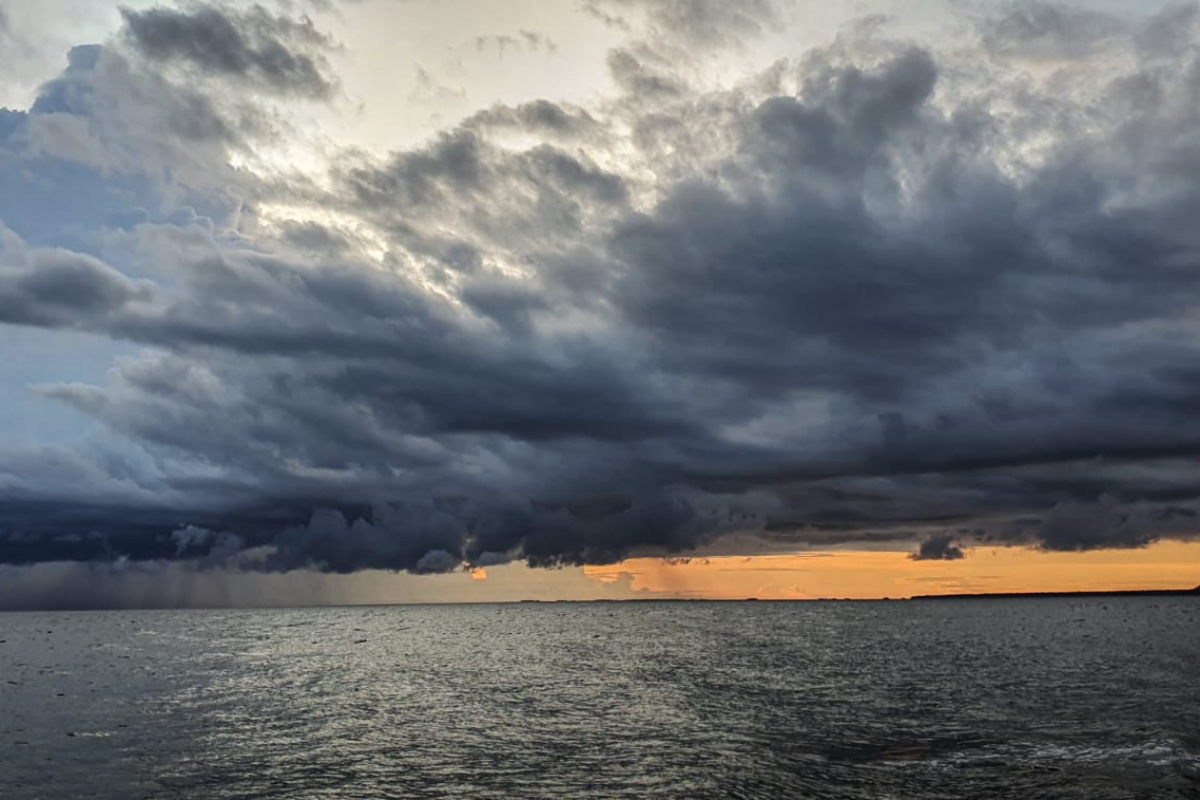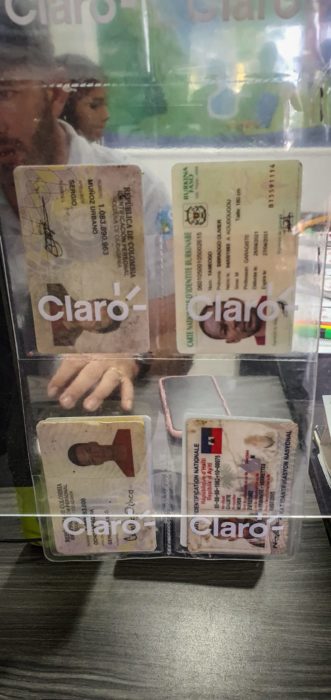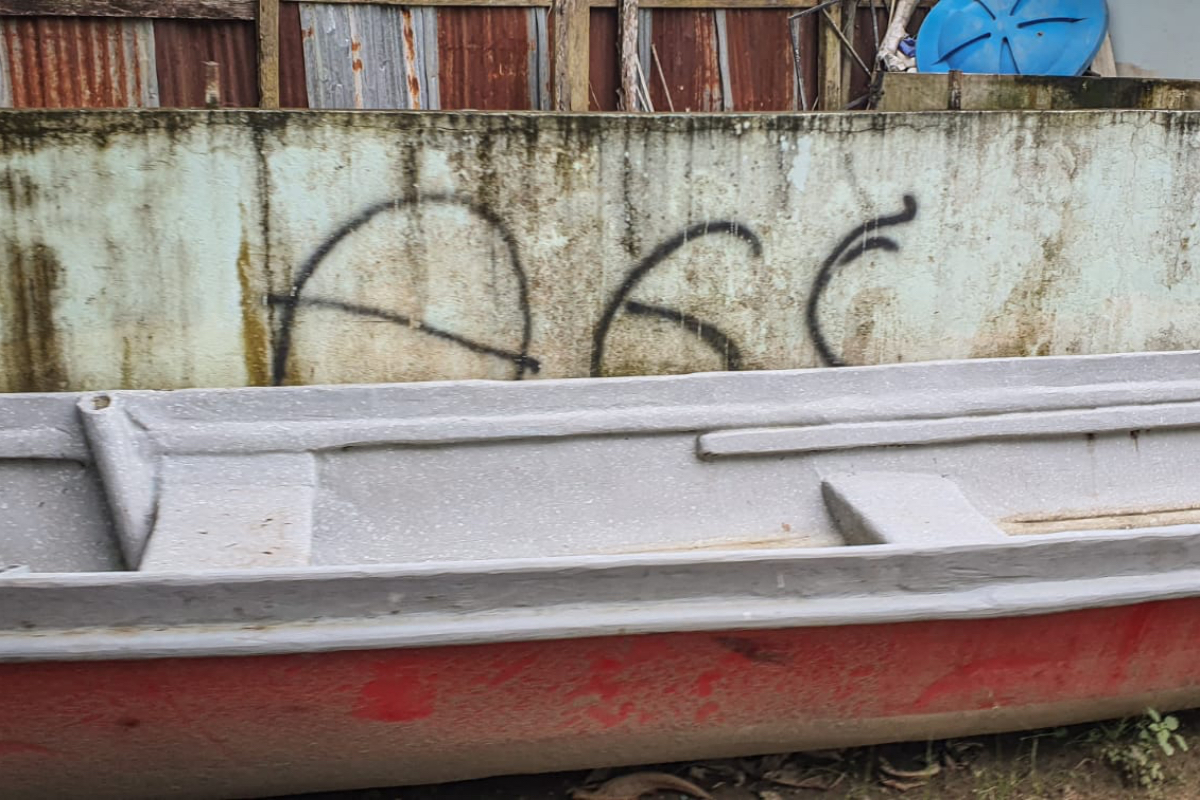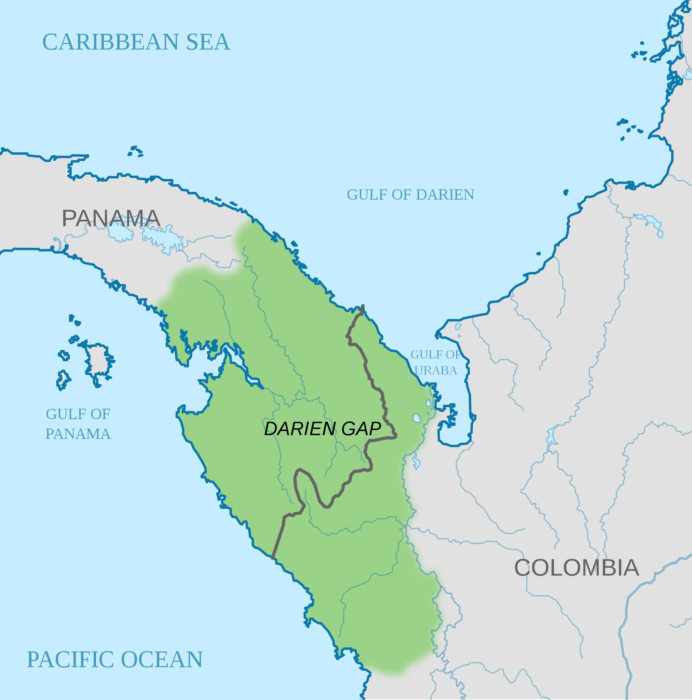

Gulf of Urabá, on Colombia’s northern Caribbean coast (Photo by Juan José Jaramillo/Latino Rebels)
COLOMBIA — Ambrose, a Haitian migrant in his thirties, waits under the Mexican side of the Del Rio International Bridge for his moment to cross into the United States. He is one of approximately 12,000 migrants who have reached the bridge connecting the Mexican state of Coahuila to Texas.
He says he isn’t scared by the recent viral image of a mounted white Border Patrol agent holding a leather whip in one hand and a young Haitian migrant in the other. After all, Ambrose has already faced racist episodes before: in Chile, during part of his trip north, and with his two children and wife when they crossed the Darién Gap, a region on the border of Colombia and Panama that forms a formidable break in the 19,000-mile-long Pan-American Highway stretching from Alaska to southern Chile.
Nothing after that is going to stop him.
He speaks intermediate Spanish, which he learned during the two years he lived in Chile working as a construction worker. He had studied computer science in Haiti but left in 2019 due to the political instability ravaging his homeland. Racist vitriol in Chile resulted in harsh immigration restrictions which forced him to leave again. And this time he did it by land, with the idea of trying to reach a richer country.
Two weeks ago he was stuck with some 20,000 others in Necoclí, a town on Colombia’s northern coast. Necoclí is the closest you can get to Panama by road. The port looks out on the Gulf of Urabá, part of the Caribbean Sea, and on the other side of the gulf lies the Darién, one of the most dangerous border regions in the world.
To cross the gulf into the jungle, two shipping companies take turns carrying around 500 migrants a day. But since August, when the countries opened their borders, around 2,000 people have arrived every day. Most are Haitians, some Cubans, some Venezuelans, but they also come from as far away as Burkina Faso or Pakistan. The number of migrants trying to cross is not usual: local sources estimate this year’s figure at around 53,000 people.
Many of them do not know what they are going to face. The Darién Gap is a 66-mile no man’s land between Colombia and Panama. The Gulf Clan, one of the most powerful mafias in Colombia, the legacy of a right-wing paramilitary force engaged in the country’s ongoing 57-year long conflict, controls the region. They’re funded by all sorts of criminal activities, mainly drug trafficking, illegal mining, and human trafficking.
Migrants are not exempt from their control. Those who do not pay the transporters, who are under the Gulf Clan’s supervision, put themselves at greater risk. The transporters pay part of what they receive to the Gulf Clan, as one of them explains. This year there have been at least a dozen deaths, but not even the Colombian authorities know with certainty how many migrants die on their crossing through Darién. Once they leave Necoclí they put their faith in the hands of these violent criminals.


Migrant IDs on display in Colombia (The letters “AGC” mark a wall in the port town of Acandí, Colombia. (Photo by Juan José Jaramillo/Latino Rebels)
Ambrose, along with his wife, his son in arms, and their eight-year-old daughter, wait at the main dock in Necoclí. There, dozens of merchants make their living by selling products for the crossing: boots, tents, machetes, antidotes to snake venom, manual stoves, pots.
He bought a tent, cans of tuna, and a thermos to carry water. He knows it will take five or six days of walking through the deep jungle to get to Panama. “They tell me that we have to pass mountains, to go up very hard, that there are mighty rivers to cross,” he says. “All of that has to be endured with patience. I know of people who died in the river.”
As Ambrose speaks, his children play with the daughter of a Venezuelan mother who also hopes to get money to cross the Darién and who does not intend to return. “Well, they have told us that the crossing of the Darién is a bit tough, but we have to continue.” She is holding a child with Down syndrome.
Once a migrant manages to score one of the few boat tickets, the ride across the gulf to Acandí is smooth. Boatloads of people pass by tourist towns with beaches on the turquoise blue of the Caribbean. In less than two hours the boats arrive at two points: Acandí or Capurganà, farther up the coast and closer to Panama. Each of the two towns, inhabited by Afro-descendants, have paths that lead deep into the jungle.
“My dream is to return to my country,” Ambrose says of Haiti. “When you are abroad you have to have a residence form, but when you are in your country, only your identity card. For me when you are in your country, it is peace, but now I have to think about my family.”
In the damaged streets of Acandí, graffiti mars the walls with the letters “AGC,” an acronym for Autodefensas Gaitanistas de Colombia, one of the Gulf Clan’s other names.


The letters “AGC” mark a wall in the port town of Acandí, Colombia. (Photo by Juan José Jaramillo/Latino Rebels)
Faced with the chaos of the massive influx of migrants, municipal authorities agreed on routes and tried to organize the departure of people from the pier to Bajo Chiquito in Panama, an indigenous town where humanitarian organizations assist those who survive the crossing. Upon arrival, survivors tell stories of rapes, mass robberies, dead bodies floating in rivers, or lost children wandering alone in the jungle.
Hundreds of migrants arrive at the Acandí pier in a few hours. They crowd into the bay to organize into groups. If they have the resources, they pay $100 for a guide to take them through the jungle. Others with less money pay for transportation to take them to the end of the road, where the long trek begins. People who do not pay the transporters journey solo.
On the trail, there are the remains of objects bought in the Necoclí market. The last boat arrives at noon; in the afternoon there is no permit for transit. Migrants must reach the jungle’s edge before nightfall.
On the dock there are women, the elderly, and families. Many do not speak Spanish and are in the hands of those who are going to transport them. Some police officers try to monitor the activities of the pier, but they are overwhelmed by the number of people and their presence is partly decorative. The police do not leave the town either; the rural areas belong to criminal groups.
Migrants cannot stay in town and must continue on their way. That is the instruction in Acandí. At the start of the afternoon there are fewer still to be seen at the dock. Some still negotiate with the guides while others, many, do not know where to go. The town is surrounded by thick jungle, a natural barrier with jaguars, panthers, snakes, and mighty rivers. Acandí will be the last town they see until their arrival in Panama.
“I am not looking for a specific country,” says Ambrose. “The idea is to find one where I can live, raise my children, my family, and have peace of mind. If Mexico is not what I expected, I hope it is the United States.”
Ambrose loses himself behind a line of people in carts, motorcycles, or on foot, heading toward the jungle in hopes of finding a better life.
Weeks later amid the clashes and the scandal over the racist treatment of the U.S. Border Patrol in Del Rio, Texas, Ambrose will write about the Darién crossing: “I saw too much suffering. Of every thousand people who pass, about five die. And here I am, waiting to get to the United States. There is no way back.”
And Ambrose is not the only one. In the port of Necocli, more than 10,000 people are on their way to the United States, waiting for their turn to cross the Darién jungle.
***
David González M. is an award-winning conflict and human rights reporter for international media. Twitter: @Davo_gonzalez




[…] Nerio undertook a dangerous journey that included traveling through Panama’s notorious jungle, the Darién Gap, and Mexico, where migrants often face extortion and threats from government officials, in hopes of […]
[…] Nerio undertook a dangerous journey that included traveling through Panama’s notorious jungle, the Darién Gap, and Mexico, where migrants often face extortion and threats from government officials, in hopes of […]
[…] coming from Venezuela and other countries travel by foot, risking their lives by passing through Colombia’s Darién Gap, often with children. With no guide or map, they are often unprepared for the mountainous terrain […]
[…] migrants venant du Venezuela et d’autres pays voyagent à pied, risquant leur vie en en passant par le Darién Gap en Colombie, souvent avec des enfants. Sans guide ni carte, ils ne sont souvent pas préparés au […]